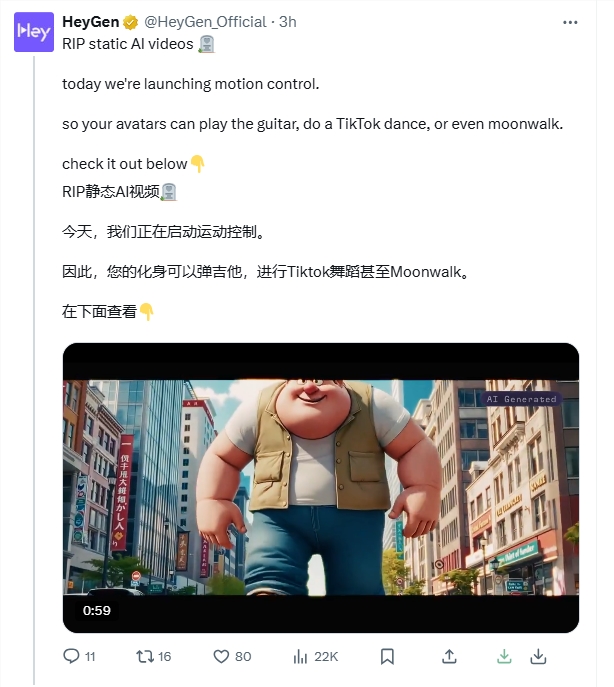HeyGen's latest digital human motion control system has caused a stir in the field of video generation. This system realizes the large-scale physical movement control of virtual images for the first time, breaking through the previous limitation of only micro-expressions on the head, allowing digital people to smoothly complete complex movements such as playing musical instruments and dancing performances, and even accurately control finger joints to complete Specific gestures. This technological breakthrough will greatly improve the efficiency of video production and bring new possibilities to areas such as virtual reality and metaverse.
The field of video generation has ushered in a revolutionary breakthrough. The latest digital human motion control system released by artificial intelligence company HeyGen realizes large-scale physical movement control of virtual images for the first time. This technological breakthrough allows digital people to not only complete basic head micro-expressions, but also smoothly perform complex body movements such as playing musical instruments and dancing performances, and even accurately control finger joints to complete specific gestures.

In the demonstration video, the natural grasping movement of a virtual character holding flowers has attracted industry attention. Although the current display is still mainly operated by a single item, the underlying technology already has an object interaction capability framework. Analysts pointed out that this function already has the potential to use product display and application, and future iterations may break through the existing display format restrictions.
This upgrade continues HeyGen's innovative path in the field of digital people. The previously released virtual image generation technology has achieved seamless integration with Sora generation scenarios. The new version reduces the action response delay to less than 12 milliseconds by introducing kinematic control algorithms. Production personnel can now use parameterized adjustment interfaces to control the angles and motion trajectories of digital human joints to replace the time-consuming and labor-consuming motion capture process in traditional film and television shooting.
It is worth noting that the generative virtual human solution adopted by HeyGen forms a clear distinction between it and the traditional digital cloning technology. The system does not rely on real-person modeling data, but automatically generates virtual images with physical rationality through deep neural networks. The technical white paper shows that the architecture supports the generation of more than 200 node bit data in real time, and cooperates with reinforcement learning algorithms to enable digital human actions to present biomechanical characteristics.
Industry data shows that the video production efficiency using this system has increased by about 47%, and the cost of dynamic scene production has been reduced to 1/8 of the traditional method. The engineer team revealed that the third-generation control system under development will integrate haptic feedback simulation and is planned to realize the physical interaction between digital people and virtual objects by the end of 2024.
Official website address: https://app.heygen.com/
This technological breakthrough by HeyGen not only improves video production efficiency and reduces production costs, but more importantly, it points out a new direction for the development of digital human technology. It may be widely used in various fields in the future and leads video generation technology. Entering a new era.